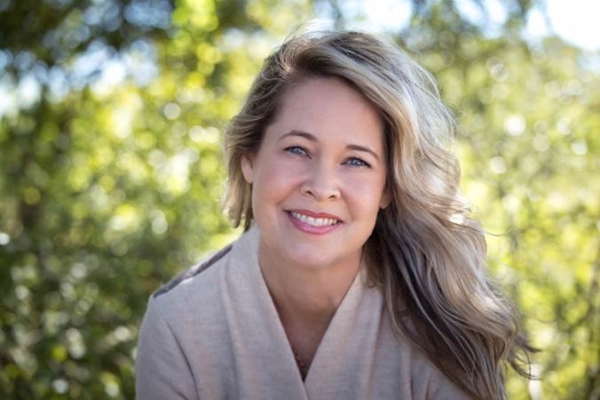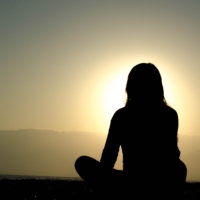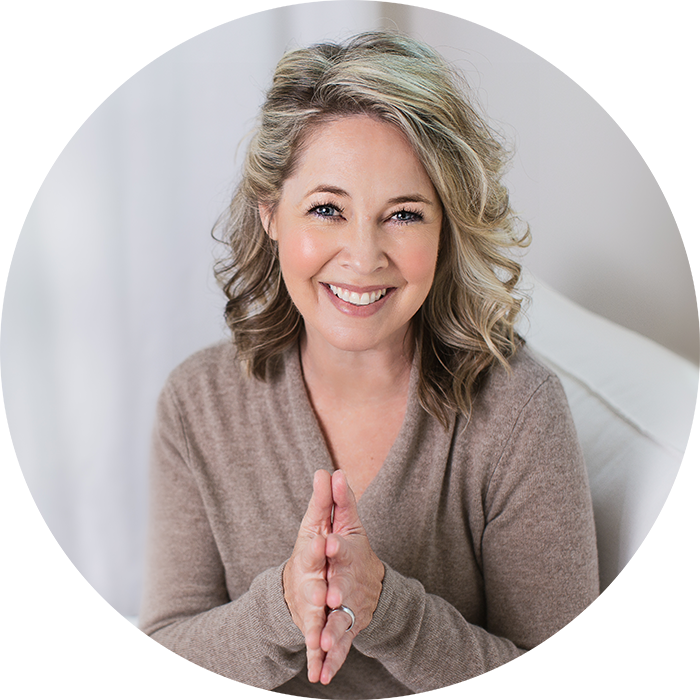When in doubt, sometimes it’s best to do nothing
Yesterday I woke up with a tight chest and my mind was bouncing all over the place. We were staying in an Airbnb thousands of miles from home, preparing to move our only child in to his college dorm room after the school tested him–and the rest of his freshman class–for COVID. Stress levels were high; I found myself wanting to spring into rapid-fire action. Instead I paused and set my timer for a 20-minute meditation.
Besides dance and yoga, the daily ritual that most helps me quiet my mind, release worry and lessen my need to control my circumstances is meditation.

For years I fought this idea of a morning ritual, of creating dedicated time every day to steep in stillness before entering the world. I had read the research on meditation, but I rationalized: “It’s too hard when you’re a parent. I’m too busy. I’ll do it later in the day. I would, but my husband won’t join me. I don’t have the right space. I need a new meditation cushion.” And so on. I worked hard to justify my reluctance, always wondering, “Does it really make a difference?” Today, it seems crazy that I needlessly postponed what I now consider the single most important part of my day.
Marianne Williamson, the internationally known modern mystic and bestselling author of A Return to Love, once said that devoting as little as five minutes every morning to your inner life can set a positive course for your entire day. As I had battled for years trying to commit to a daily twenty-minute meditation practice, this wisdom really spoke to me. Being grateful every morning for five minutes? I could do that. Here are five tips that may help you jump-start a meditation practice:
• Schedule meditation for the same time each day. It works best to meditate early in the morning, since this is often when the house is the most quiet; the morning is also when our minds are most quiet and clear. If you’re not an early-morning person, do it later in the day: take a mid-morning nature break while at work, or wait until after the kids have gone to bed.
• Identify where you’ll pause for your practice. Find or create a space in your home that elicits peace, healing, and self- nurturance. Know that you can go there at any time, and use this as a regular meditation place. Maybe it’s a special reading chair, a creativity altar, or a spot in the backyard under your favorite tree. Or, if setting aside a certain spot isn’t feasible, simply close your office or bedroom door to create a temporary “space.” Identify a quiet parking lot or a nearby green space where you can park alone during your morning commute. Get creative!
• Tap a source of comfort and inspiration. To focus their intention and set the tone for the day, many like to read and meditate on an inspirational text or phrase. This could be from a spiritual teaching, the Bible, a favorite book or poem, or even an inspirational card deck.
• Remember to breathe. Sometimes when we meditate, our agitation and anxieties fill our heads with thoughts and to-do lists. When this happens, don’t forget to breathe! Breathing detoxifies, energizes, changes our mood and biochemistry, wakes up the brain, and helps us feel more present and calm. One technique I use when I meditate, is to breathe in very slowly for a count of three, hold for three, and exhale for three — all through the nose with the mouth closed. Keeping your eyes closed while doing this also helps focus your awareness inward. You might also choose a word or mantra to help you stay focused on your breathing.
• Ritualize your morning meditation time. Establish a simple ritual or routine for your morning meditation, which provides a rhythm and structure. For example, you might first light a candle, close your eyes, and rest in stillness. If you like, you could then read a short inspirational text, and close by reflecting on what you’re grateful for or setting an intention for the day. You might ask for guidance on an issue or help releasing feelings that have been bothering you. Choose a rhythm and flow that works for you. (More tips and guidance on daily meditations practices in my new book Nurturing the Soul of Your Family.)
Above all, release “shoulds” or “have tos.” There is no right or wrong way to do this. Keep it simple, maintain a sense of humor, and — above all — make it personally meaningful. Bhavani, a wonderful meditation teacher I know at Kripalu, says, “How do you know when you’ve had a successful meditation? It’s over.” Don’t worry about the results. Just creating the space for stillness and accepting whatever unfolds is enough. Every time you come to your meditation cushion will be different. Allow yourself to experience what it’s like to be fully present and comfortable sitting in silence. And be easy on yourself. If this is new, even just starting with five minutes of quiet before you begin your day is huge!
Lastly, give this time. You may not experience immediate or consistent results, but you still receive tremendous benefit from regular practice. Even on the days when my thoughts are ricocheting around like exploding popcorn, I still feel better after I meditate than I did before. A spiritual mentor once said to me, “Want to experience a little bit of peace? Meditate once a week. Want to experience a lot of peace? Meditate every day.” For a growing number of us, meditation is the secret weapon for maintaining our sanity!

SEEKING SUPPORT FOR YOURSELF OR YOUR TEAM? HERE ARE TWO OPPORTUNITIES::
- I’m scheduling custom online retreats and workshops now! Consider hiring me to create an online experience to help your team, organization or employees feel less stressed and more resilient, creative and focused. For 20+ years I’ve been coaching professionals worldwide on how to find balance through practicing the art/science of self-care. Whether it’s a workshop, keynote or mini-retreat via Zoom, I’d love to discuss how I can support your organization. Learn more here.
- *Almost full!* Sept. 27th, 1-4 p.m. REVERENCE: Spiritual and Soul-Lifting Practices to Nourish & Sustain ~ a women’s online virtual retreat. Learn more and register here. Space is limited.
Subscribe here to Live Inside Out, a weekly blog written by life balance coach/author/speaker Renée Peterson Trudeau. Passionate about helping men and women find balance through the art and science of self-care, her work has appeared in The New York Times, Good Housekeeping, US News & World Report, Spirituality & Health and more. She and her team have certified more than 400 facilitators in 10 countries around the globe to lead life coaching groups and women’s retreats based on her work. She’s the author of two books on life balance including the award-winning The Mother’s Guide to Self-Renewal. She lives in Austin, Texas, with her husband and 18-year-old son. More on Renee here.


